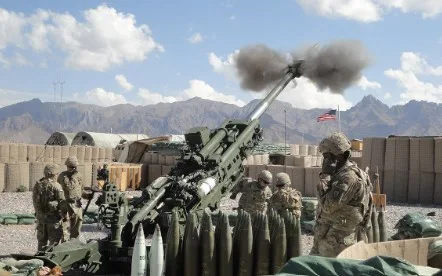 |
| The Prowess of NATO Standard Artillery 155 MM Caliber That Can Be Very Deadly |
International Military - Since the early 21st century, most NATO military forces have adopted the 155 mm gun as standard all-purpose. In contrast, Russia and the countries of the former Soviet bloc tend to use 152 mm guns in the same role.
Quoted from the Geneva International Center for Humanitarian Demining (GICHD) page, 152 mm or 155 mm caliber artillery guns can be found in most conflicts today. The two calibers are broadly similar in capabilities, both capable of sending around 40 kg projectiles over a range of 17-40 km.
The 152 mm and 155 mm guns are often considered heavy artillery. The former Warsaw Pact countries opted for the 152 mm caliber weapon developed in Russia. While NATO members and western forces have chosen to adopt the 155 mm caliber, which was originally developed in France (REF).
Artillery guns are designed to provide fire support for armored troops and infantry by firing ammunition at greater distances than small arms and light weapons. The term artillery gun is used to refer specifically to self-propelled, towed and emplaced (i.e. not man-portable) guns of greater than 57 mm caliber designed for indirect fire and capable of hitting targets.
The standard NATO artillery caliber is generally 155 mm (6.1 in), defined in AOP-29 part 1 with reference to STANAG 4425. The 155 mm caliber originated in France after its defeat in the Franco-Prussian War of 1870–1871. Then the use of 155 mm caliber was established on April 21, 1874. Usually 155 mm artillery was used in field guns and howitzers (large cannon).
The standard 155 mm howitzer in the US arsenal has a maximum range of 14 miles (22.5 km), and the rocket-assisted 155 mm projectiles increase the maximum range to almost 18 miles (25.7 km).
The use of the 155 mm caliber led to the obsolescence of the larger caliber guns such as 175 mm and 203 mm. Although some troops retained the 105 mm gun for portability.


